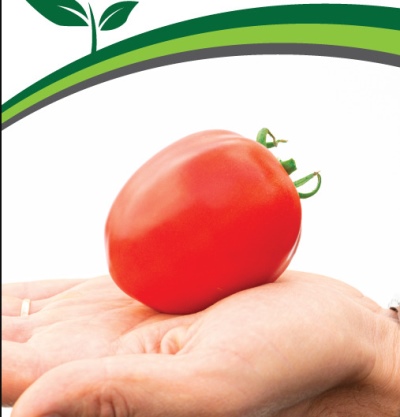
- Authors: Blokin-Mechtalin V.I.
- Year of approval: 2021
- Category: hybrid
- Growth type: determinant
- Appointment: universal
- Ripening period: mid-season
- Ripening time, days: 110-115
- Growing conditions: for open ground, for film greenhouses
- Bush size: medium-sized
- Bush height, cm: 90-105
The newest varieties of plants can sometimes open up really "fabulous" perspectives. However, it is important to use them correctly and clearly. This fully applies to such a promising option as the Sinbad tomato.
Breeding history
The creator of the plant is Blockin-Mechtalin, which has already earned an excellent reputation. His name acts as a kind of quality guarantee. The culture was officially registered in 2021. She is by nature a hybrid.
Description of the variety
Sinbad is a classic determinant, with all the strengths and weaknesses of this group. It is successfully planted both in open ground and in polyethylene under film protection. The bushes of such a tomato reach 0.9-1.05 m in height. Dark green foliage of great length develops on them.
The main qualities of the fruit
In short, it looks like this:
- at the time of formation, the berries are colored light green and do not have any color differences in the region of the stalk;
- when ripe, the fruits become pink;
- the usual mass of berries is 0.11 kg;
- they are similar in shape to a cube and have an average level of ribbing;
- 1 brush includes 7 or 8 tomatoes;
- the laying of the first inflorescence - above the 7th leaf;
- the formation of subsequent inflorescences - every 2 leaves;
- the peduncles are devoid of articulations.
Taste characteristics
The flesh of the Sinbad tomato is dense. There is also no need to talk about its insufficient meatiness. Overall, the tomato is very well received. The fruits can be used in whole-fruit canning. They are also taken for salads and other combined dishes.
Ripening and fruiting
This variety belongs to the mid-season tomato category. Ripeness is reached in 110-115 days. The starting point is always the appearance of the first green shoots. You can start picking berries at the end of July. Fruiting will continue in August and early September.
Yield
Sinbad tomato is capable of giving 14.5 kg per 1 sq. m. In some cases, in the open field, productivity is reduced to 13 kg. In protected ground conditions, according to some sources, the production can be raised to 16-17 kg. However, this information has not been officially confirmed. In addition, the final figure is highly dependent on the meteorological factor and on how diligently the crop is grown.
The timing of planting seedlings and planting in the ground
Sowing seeds in seedling containers or ordinary boxes should be in the last decade of February. Usually, seedlings are ready for transfer to the main growing site in April or May. Sometimes the meteorological situation makes this schedule change a little.

Growing tomato seedlings is an extremely important process, because it largely depends on whether the gardener will be able to harvest at all. All aspects must be taken into account, from seedbed preparation to planting in the ground.
Landing scheme
Usually limited to 3 plants per sq. m. Sometimes they add 1 more bush. It is advisable to choose a seating system of 400x600 mm. Other options are not very smart to use.

Growing and care
The formation of the bushes must be done strictly. The most attractive dribble is 3 or 4 stems. The choice of these options is determined by horticultural considerations. Despite the declared resistance to verticillium, tobacco mosaic and top rot of fruits, it is still very important to take care to a certain extent about the prevention of damage by them. You will also have to provide for protection from other infections and pests.
Under a film shelter and in a full-fledged greenhouse, "fabulous" tomatoes will really ripen very early. It is necessary to dive seedlings when the first true leaf appears. This plant is very responsive to mineral fertilizing. Increased amounts of them are extremely useful when laying fruits in the very first inflorescences. In turn, with a deficiency of nutrients, the overall productivity will inevitably decrease.




A plant needs different micronutrients at each stage of growth. All fertilizers can be divided into two groups: mineral and organic. Folk remedies are often used: iodine, yeast, bird droppings, eggshells.
It is important to observe the rate and period of feeding. This also applies to folk remedies and organic fertilizers.


Growing regions
You can grow a tomato Sinbad in the gardens:
- Siberia;
- The Far East;
- The North Caucasus;
- Voronezh, Tambov, Kursk regions;
- Moscow region;
- north of Russia;
- Volga region;
- Volga-Oka region.

























































































